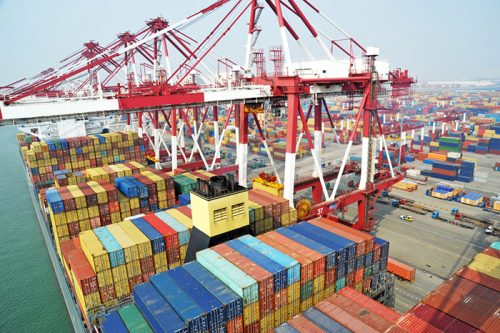China Merchants Port Holdings is looking for targets in Southeast Asia, chasing emerging opportunities as manufacturing supply chains look to the region to escape pain being inflicted by the Sino-American trade war.
The ports operator, which controls some 36 ports in 18 countries and regions across the world, currently doesn’t have a port in Southeast Asia.
“We must operate ports that are in the frontline, at hubs enjoying regional advantages, or at an international hub,” Managing Director Bai Jingtao told reporters in Hong Kong. “It is our strategy to look for opportunities in Southeast Asia.”
Rising uncertainty over the outcome of the trade war and disruptions to businesses caused by escalating tariffs are forcing companies to take a relook at where they manufacture goods. Several companies have been looking to the Southeast Asia region to sidestep the impact, according to several media reports in recent weeks.
“People have been saying that manufacturing and assembly industries are relocating to Southeast Asia from China, but it is very difficult for us to gauge the actual impact,” Bai said. “Our teams have been mainly spending their energy on in-depth field visits to find out the real situation and do due diligence.”
In a statement it issued earlier in the day, the state-controlled company said “the trend of industries migration and booming emerging markets” will bring development opportunities.
China Merchants Port on Friday said its net profit in the first half of 2019 increased 19.8% to HK$6.53 billion ($832.28 million), helped by a one-off gain of HK$4.82 billion from the disposal of certain land parcels. Half-yearly revenue fell 19.7% to HK$4.46 billion in the absence of contribution from Shenzhen Chiwan, a unit in which the company last year sold its stake to its parent group.
China Merchants Port company said throughput of containers it handled reached 54.56 million twenty-foot equivalent units (TEUs), up 1.4% from a year ago, while throughput of bulk cargos handled fell 10.7% to 223 million tons.
The drop in the company’s bulk cargo throughput will likely not be as steep in the second half of the year as it was in the first half, while container throughput for the full-year should record a single-digit increase, Bai said.
“Historically, the second half is better than the first half, but there are too many uncertainties,” Bai said. Still, “domestic throughput volume will increase for sure, but at a slower rate.”
The company, a member of the China Merchants Group that also has business interests in finance and property, derives nearly 60% of its revenue from operations in mainland China, Hong Kong and Taiwan. It also has operations in South Asia, Africa, the Mediterranean region and South America.
The trade war was only one of the main challenges facing the international container transportation market in the second half of the year, China Merchants Port said. It listed the implementation of sulfur limit on marine fuel and the pressure on freight rates among other headwinds.
The International Marine Organization, a United Nations agency that sets global standards for safety, security and environmental performance of international shipping, has called for a reduction of sulfur content in marine fuels to 0.5% by January 2020, from 3.5% now. Only ships with equipment to clean sulfur will be allowed to continue using high-sulfur fuel. Intended to reduce pollutants, compliance with the move is expected to increase the operating cost of vessels.
To mitigate impact from the challenging macro-environment, the company is looking to boost its competitiveness by investing in technology to improve operations, and by cutting costs.
“We have implemented many measures” to trim expenses, Bai said.
The company on Friday declared an interim dividend of 22 Hong Kong cents per share, unchanged from year ago period.
Shares of China Merchants Port Holdings rose 1.3% to HK$12.24, while Hong Kong’s benchmark Hang Seng Index ended little changed.
Source: Nikkei
